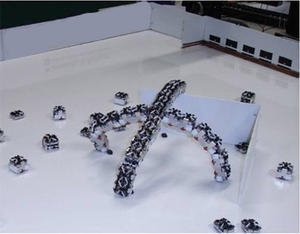Search and rescueSwarming robots for search and rescue missions
A Swiss research center wants to develop swarms of flying robots that can be deployed in disaster areas rapidly to create communication networks for rescuers. Flying robots are suitable for such applications because they are fast, can easily overcome difficult terrain, and benefit from line-of-sight communication

Swarms can combine intelligence and ability to solve problems // Source: unitn.it
The École Polytechnique Fédérale de Lausanne (EPFL) reports about a project which would be of interest to search and rescue teams. The SMAVNET project aims to develop swarms of flying robots that can be deployed in disaster areas rapidly to create communication networks for rescuers. Flying robots are suitable for such applications because they are fast, can easily overcome difficult terrain, and benefit from line-of-sight communication.
An EPFL release reports that to make aerial swarming a reality, robots and controllers need to be made as simple as possible. From a hardware perspective, robots are designed to be robust, safe, light-weight, and low-cost. Protocols and human-swarm interfaces are developed to allow non-experts easily and safely to operate large groups of robots.
The software is designed to allow flying robots to work together. For swarming, robots react to wireless communication with neighboring robots or rescuers (communication-based behaviors). Using communication as a sensor is interesting because most flying robots are generally equipped with off-the-shelf radio modules that are low-cost, light-weight, and relatively long-range. This approach also alleviates the need for position which is required for all existing aerial swarm algorithms and typically requires using sensors that depend on the environment (GPS, cameras) or are expensive and heavy (lasers, radars).
The release provides more details about the robots themselves, the swarm algorithms, and the swarm setup.
